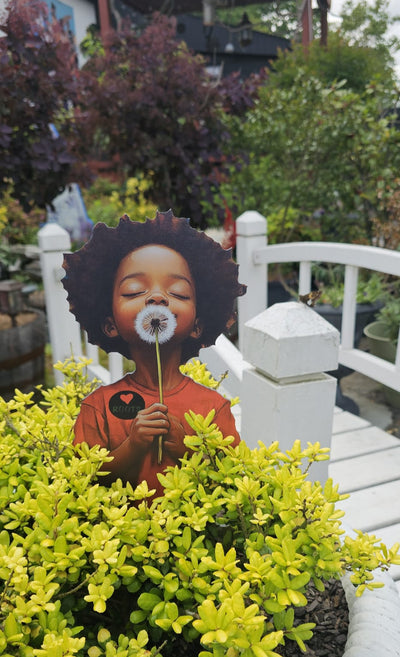Blues at the Heart of Black Art in America Gallery’s Latest Exhibit: From Beale to Bourbon Street
Blues at the Heart of Black Art in America Gallery’s Latest Exhibit: From Beale to Bourbon Street
By Zaria Johnson
In the center, Jontavious Walker, American country blues singer, playing an array of songs from his discography to close out the panel discussions.
A panel of musicians, scholars and cultural critics gathered in Atlanta this week to explore the complex legacy of the blues and its evolving place in Black culture as part of a Black Music Month celebration. From ancestral rhythms to strip club anthems, the conversation covered nearly a century of sound, resistance and reinvention.
“People often ask me how important the blues still is today,” said Jontavious Willis, a veteran blues performer. “Well, back in the day, the blues was for the people. Today, it’s being pushed downtown, and the folks performing it aren’t always the ones who lived it.”
Music professionals are witnessing the gentrification of Black voices within blues and R&B. Willis described what he called the “gentrification” of the genre, noting that many modern blues acts are white and that younger Black blues artists often don’t see the financial fruits of their labor.
The panel delved into how Black audiences sometimes distance themselves from the genre.
“I think Black people associate blues with slavery music,” Willis said. “But I like to tell them — it’s post-slavery music. It was the first music we made when we got free.”
Sam Livingston, professor of Africana studies at Morehouse College with , emphasized the timeliness of returning to the blues.
Livingston teaches a range of classes, including Introduction to Africana Studies, Africana Studies Theory, Black Liberation Movements, The Black Aesthetic of Hip Hop Culture, and African Diasporic Cultures: The Gullah-Geechee Experience.


“We’re in a moment where we need to be gravitating towards this history,” Livingston said.
In true academic fashion, Livingston brought the classroom to the mic and then again to the audience in the Black Art in America gallery. His remarks also highlighted the activism embedded in the sound, referencing Malcolm, also known as Rhythm Red, and his efforts to draw parallels between protest and performance.
The role of vulgarity in music prompted a pointed exchange.
“We keep acting like today’s lyrics are something new,” Willis said. “But there were songs like Shave ’Em Dry by Lucille Bogan back in the day. Blues has always had sexuality in it.”
Indeed, sexuality and strip club culture were recognized as influential in shaping today’s musical aesthetics.
“Some artists build entire songs around the strip club,” said Rico Brooks, producer and A&R manager. The intersection of sexual expression and music can be both empowering and commercially effective.
Modern technology’s impact on production also surfaced.
“Now, a song can be made in an hour and posted online just as fast,” Brookes said. “Social media has completely transformed how we make and hear music.”
Yet not all technological advances are embraced. Willis, who favors analog processes, said, “Sometimes it ain’t perfect, and that’s alright,” referencing his preference to avoid vocal enhancements like Auto-Tune in his blues compositions.
Audience member Victor Brown warned of how corporate influence is shaping Black music.
“They’re using music as a Trojan horse to subvert our culture,” Brown said.
The question of how music operates in the liberation struggle resonated throughout the conversation.
“What is music really doing for us?” Livingston asked.
An audience member responded, “It has to come back to reflecting the people and the culture.”
Brooks added, “It’s not just the beat, but it’s what they were saying. When certain songs come on [at the clubs] it was almost like there’s going to be a fight. Certain music just elicits certain moods.”
When asked where in Atlanta someone could still experience authentic blues or jazz, Willis suggested LaGrange’s listening rooms and emphasized that the tradition is alive and well for those who seek it out.
“Blues is a fertile ground,” Willis said. “It’s for all ages. You can start anytime and end anytime. Don’t say you can’t play music — you just ain’t found the right instrument yet.”
Black culture in America is alive and well. From Sinners to the headlining themes at the Met with Black Dandyism to blues performances at Black Art in America’s Juke Joint inside artist Najee Dorsey’s exhibit From Beale to Bourbon Street, Black voices are singing through the halls of every listening room and TikTok For You page.
Jontavious Willis preparing to sign a copy of his 2024 release, "West Georgia Blues."
























